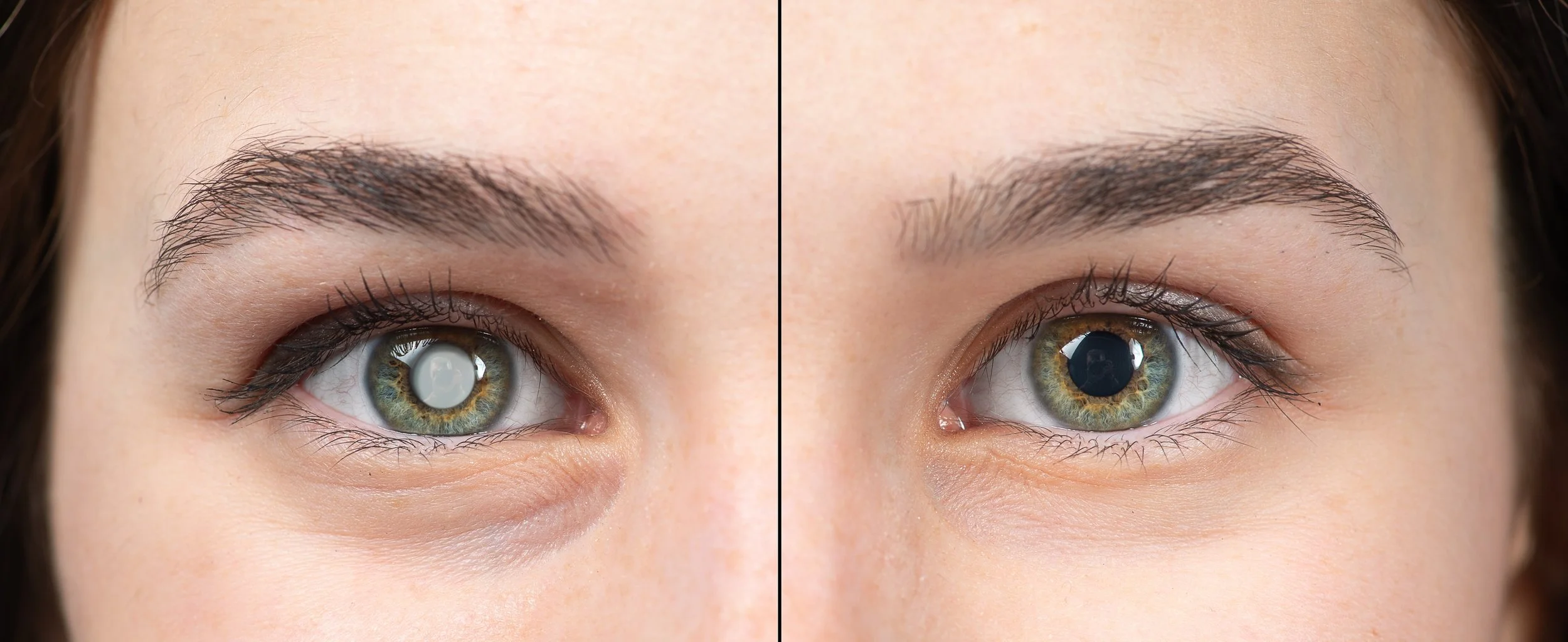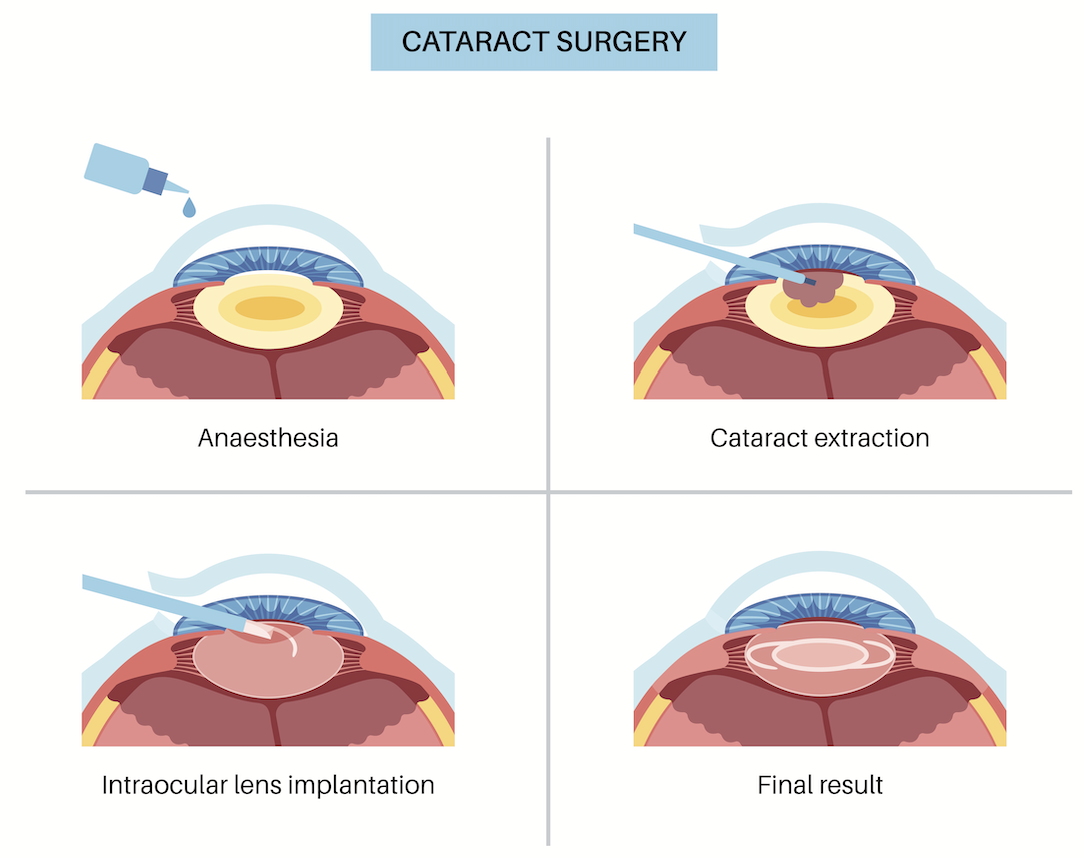What Are Cataracts?
A cataract is a clouding of the natural lens inside the eye. The lens normally helps focus light, giving us sharp, clear vision. Over time, however, proteins in the lens can clump together and cause it to lose its clarity—similar to looking through a foggy window. This is what we call a cataract.
Cataracts are most often related to the normal aging process. While they are very common in people over 60, early changes can begin as early as your 40s or 50s. In fact, nearly 90% of people will show some signs of cataracts by age 65.
Symptoms of Cataracts
Cataracts usually develop gradually and may affect one or both eyes. Common symptoms include:
Blurry or cloudy vision that doesn’t fully improve with glasses
Glare and halos around lights, especially when driving at night
Fading or dullness of colors
Increased light sensitivity
Progressive worsening of vision, which may eventually interfere with daily activities
In advanced cases, significant vision loss
If left untreated, cataracts can greatly impact quality of life, making it difficult to read, drive, or recognize faces.
Treatment of Cataracts
The only effective treatment for cataracts is surgery. Cataract surgery is one of the most commonly performed and safest procedures worldwide. During the surgery, the cloudy lens is removed and replaced with a clear artificial lens called an intraocular lens (IOL). This restores clear vision and often reduces dependence on glasses.
Modern cataract surgery is highly advanced and may be performed using laser-assisted techniques for added precision. Most patients experience a dramatic improvement in vision, allowing them to return to activities they enjoy with greater clarity and confidence.
This page is for informational purposes only and does not provide medical advice.
Contact us!
Dr. Tadrosse specializes in advanced cataract surgery, utilizing the latest techniques and technology to achieve the best possible vision outcomes. He has extensive experience implanting a wide range of intraocular lenses, including standard, toric (for astigmatism), and premium multifocal options tailored to each patient’s visual needs. Call today to schedule your consultation — we would be delighted to evaluate your eyes and design a personalized treatment plan that best suits your lifestyle and goals.


